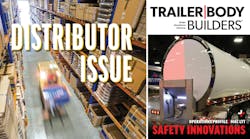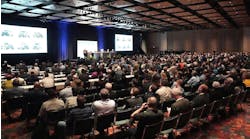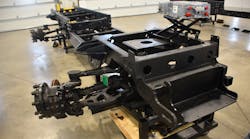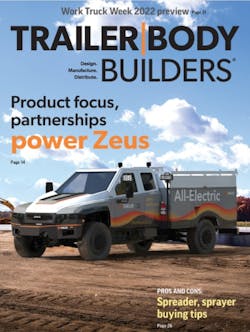[The following editorial appeared in the January print edition of Trailer/Body Builders, the Work Truck Week preview edition.]
In the four years I’ve been covering The Work Truck Show for TBB, electric vehicles have taken up an increasing amount of space on the show floor (as well as coverage in this space). Indeed, NTEA touted the 2020 show as an “electric” success.
Yet, I've remained a tad skeptical. After all, a 50+-year-old issue of this magazine touted an electric future for P&D vehicles. Instead, we got electric golf carts. I happened to mention this lingering doubt to Chris Weiss, vice president of engineering at Knapheide, during a chat we had about EVs for this month's cover story.
Weiss is a current NTEA board member and a past chair of the Green Truck Association, so I was a little surprised when he admitted to being "a little surprised" that the market hadn't materialized sooner for commercial EVs.
"I expected EVs to really take off, but we always felt there was going to be this quantum leap in battery technology. They've certainly improved, but we have not had that quantum leap," he said. "And until we really see that leap, you're going to have a hard time meeting all these mandates and ultimatums and goals that are being put out there by governments and corporations.”
Indeed, the transition to electric work trucks will require the truck OEMs, the equipment manufacturers, the component suppliers, and the body integrators all to be on the same page when it comes to coming up with customer solutions, Weiss continued.
Essentially, an EV truck's battery capacity should be determined by the range and the work needed in an application, so customers need to understand those demands precisely.
“Our customers are no different than everybody else's: They just want everything and the kitchen sink, all put together,” Weiss said. “But EVs are going to present them with a challenge; they really need to understand their duty cycles, and what they anticipate doing. If they want to go all EV, they're going to have to manage that battery power a little bit better.”
On the component side, electric equipment options are already on the market but these require their own batteries and battery management systems—which could be unnecessary on an electric truck.
“Today, we may take a chassis and then we'll put a body on there, and maybe we'll put a crane, a compressor and a welder on there,” he said. “Well, if they all now come with their own electric systems, you're going to add 2,000 pounds of battery. So there's a unique role for the upfitter in figuring out how to put on enough modular power to manage what the customer needs to do. I don't think we're going to be the battery developers, but we're certainly going to be the integrators to help the customer manage that battery power.”
The problem, at least initially, is customers often do not fully understand exactly what they need—because range and work don’t have to be managed as closely with an internal combustion engine: Just conveniently fill the tank now and again.
So upfitters will have to make sure the customer is ordering a chassis with the right GVWR, power capacity, and charging plan to do the job. Too little power, and the work can’t be done; too much power means unnecessary weight and cost.
“I don't know if I care where the battery power comes from: If it comes from the chassis, great; if we have to add a battery pack, those are available and we can make that happen,” Weiss said. “We're just trying to balance the whole.”
And, given the weight of batteries, electric work trucks will require lighter materials, such as aluminum, Weiss noted.
The current rush to electrify, typically rooted in sustainability goals, somewhat resembles the push a decade ago for alternative and cleaner-burning fuels such as CNG and propane, he suggested. Now, the buzz is “carbon neutral.”
The difference, Weiss explained, is that there’s “so much money” in the game this time: government mandates and incentives, billion-dollar bets on EV startups, and the rush to market by existing truck OEMs who don’t want to be left behind.
“That’s all you’re going to hear about at NTEA this year,” said Weiss. “I think there will be a lot of questions at The Work Truck Show: ‘What do I do? How do I do that?’ We’re trying to stay a step ahead, working with chassis manufacturers and the people doing EVs to figure this out.
“So from an OEM perspective, we're agnostic and we want to be friends with everybody—because the more chassis, the more we get to put bodies and integrations on. But from a customer perspective, there's just a lot of questions.”
And that's what Work Truck Week is all about. See the preview on Page 31, and we'll see you in Indy next month.










